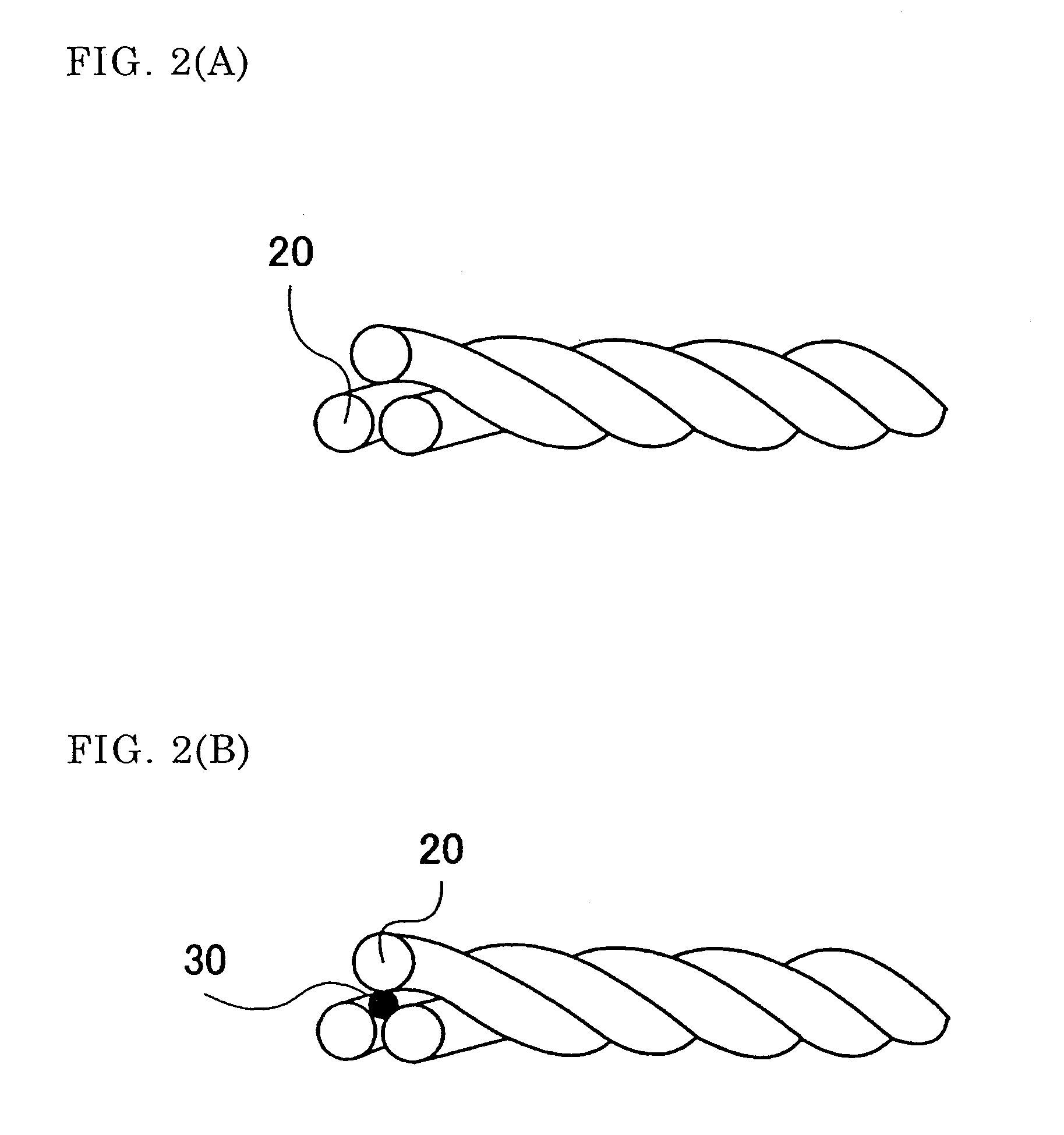DC superconducting cable
a superconducting cable and direct current technology, applied in the direction of superconductors/hyperconductors, superconducting magnets/coils, magnetic bodies, etc., can solve the problems of reducing the cooling effect of the cooling devi
- Summary
- Abstract
- Description
- Claims
- Application Information
AI Technical Summary
Benefits of technology
Problems solved by technology
Method used
Image
Examples
Embodiment Construction
[0030]Embodiments of the present invention are described below.
[0031]FIG. 1(A) is a sectional view illustrating a superconducting cable without a return-current conductor according to the present invention. FIG. 1(B) is a sectional view illustrating a superconducting cable with a return-current conductor according to the present invention.
[0032][Overall Structure]
[0033]In this cable, three cable cores 20 are stranded together and are housed in a thermal insulation pipe 10.
[0034][Thermal Insulation Pipe]
[0035]The thermal insulation pipe 10 is a double pipe structure formed by an inner pipe 11 and an outer pipe 12. A vacuum thermal insulation layer 13 is disposed between the inner pipe 11 and the outer pipe 12. Within the vacuum thermal insulation layer, a laminated body formed of a plastic net and a metal foil, i.e., so-called “super insulation”, is disposed. A space formed between the inner side of the inner pipe 11 and the core 20 serves as a channel for a coolant, such as liquid n...
PUM
| Property | Measurement | Unit |
|---|---|---|
| superconducting | aaaaa | aaaaa |
| electrical | aaaaa | aaaaa |
| thermal contraction | aaaaa | aaaaa |
Abstract
Description
Claims
Application Information
 Login to View More
Login to View More - R&D
- Intellectual Property
- Life Sciences
- Materials
- Tech Scout
- Unparalleled Data Quality
- Higher Quality Content
- 60% Fewer Hallucinations
Browse by: Latest US Patents, China's latest patents, Technical Efficacy Thesaurus, Application Domain, Technology Topic, Popular Technical Reports.
© 2025 PatSnap. All rights reserved.Legal|Privacy policy|Modern Slavery Act Transparency Statement|Sitemap|About US| Contact US: help@patsnap.com



